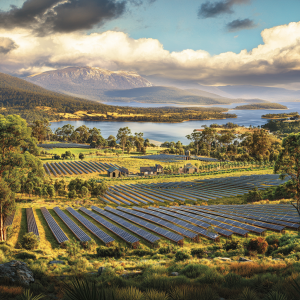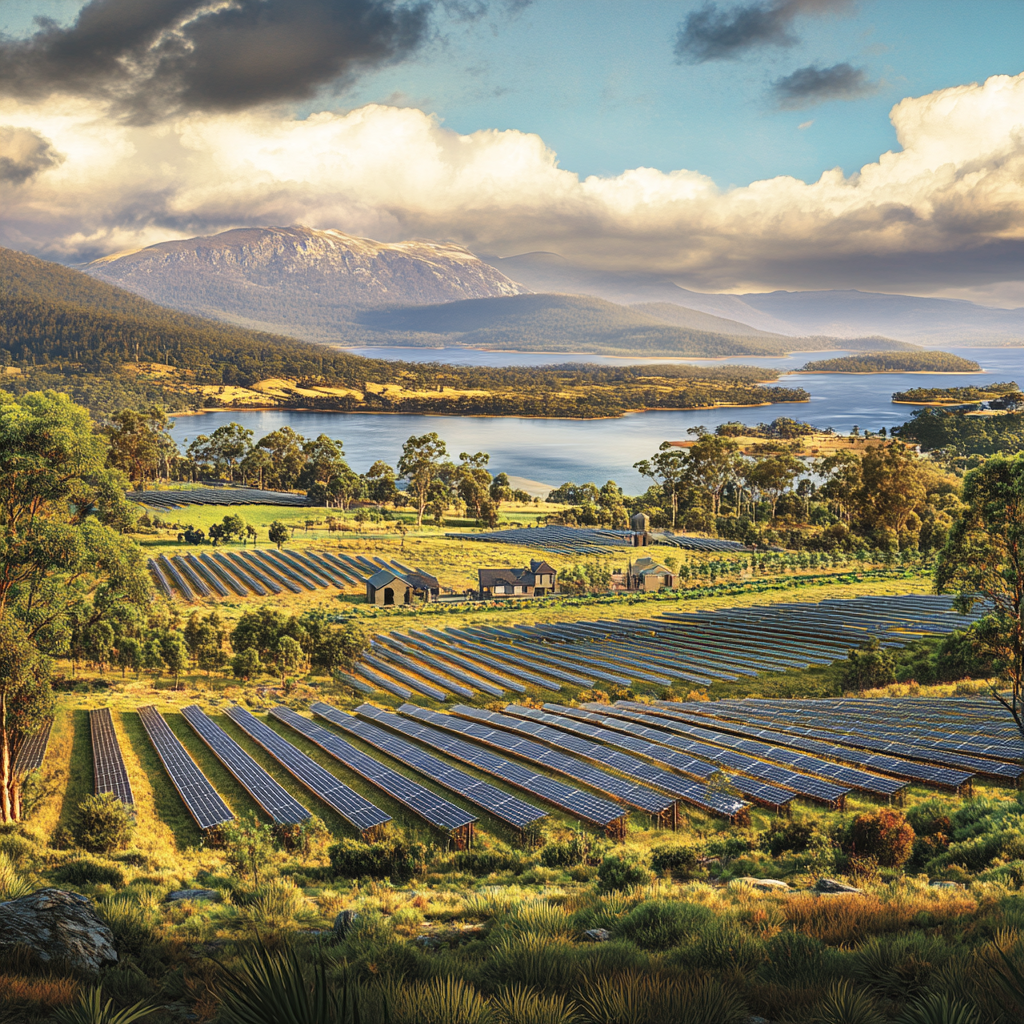In a monumental step forward for renewable energy in Australia, Tasmania is set to host the state’s first large-scale solar photovoltaic (PV) farm. The $500 million Northern Midlands Solar Farm, developed by TasRex in partnership with Birdwood Energy, will be constructed near Cressy on the 17,400-hectare Connorville Estate and is expected to deliver 288 megawatts (MW) of clean electricity—enough to power up to 70,000 Tasmanian homes. This will make the project the fourth-largest energy generator in the state, trailing only the Gordon and Poatina hydro stations and the Tamar Valley gas power station. With Tasmania already known for its hydroelectric resources, this project is a strong signal that solar energy is now playing a vital role in balancing and diversifying the island state’s renewable energy portfolio.
The Future of Solar Power in Tasmania
What makes the Northern Midlands Solar Farm especially significant is not just its size, but the strategic long-term power purchase agreement (PPA) that has been secured with Hydro Tasmania, the state-owned utility. Hydro Tasmania will buy 100% of the solar farm’s output, which offers a stable financial foundation for the project and ensures the generated solar power will be efficiently integrated into Tasmania’s electricity grid. Minister for Energy and Renewables, Nick Duigan, described the project as a landmark development for Tasmania’s energy landscape, adding that it aligns with the government’s goal of doubling on-island renewable energy generation by 2040. As part of the 2030 Strong Plan and the “Tasmania First” energy policy, the solar farm helps deliver on the government’s promise to provide reliable, affordable, and sustainable energy to all Tasmanians.
The project is not just about energy generation; it is also a key driver for economic activity in the region. During the construction phase, which is set to begin in 2026 following final design and permitting stages, the solar farm is expected to create approximately 370 jobs, offering a substantial boost to the Northern Midlands economy. Once completed by 2027, the site will continue to serve a dual purpose, supporting sheep grazing and wool production alongside solar energy generation. This “agri-solar” model is increasingly popular across Australia, particularly in rural communities where agricultural livelihoods must be preserved. It demonstrates how renewable infrastructure can coexist with traditional farming practices, delivering environmental and economic benefits simultaneously.
The Role of Tasmania Safer Solar
Another important advocate for the project is Tasmania Safer Solar, a local organisation committed to advancing safe, ethical, and community-aligned solar energy deployment. Tasmania Safer Solar has expressed strong support for the Northern Midlands Solar Farm, particularly commending the project’s focus on long-term safety, regulatory compliance, and transparent stakeholder engagement. A spokesperson from the organisation stated that this project sets a new benchmark for how large-scale solar infrastructure can—and should—be developed in harmony with local communities and landscapes. Their endorsement reinforces the broader importance of public trust in renewable energy initiatives, especially those of this magnitude.
A spokesperson from Tasmania Safer Solar noted:
“Projects of this scale present not just technical opportunities, but also a responsibility to lead with transparency and care. We’re proud to advocate for a solar future that supports Tasmania’s people and environment.”
TasRex CEO Bess Clark called the agreement with Hydro Tasmania “critical” and described the solar farm as a transformative project that redefines what’s possible for solar energy in Tasmania. She emphasised the company’s excitement about the long-term benefits the farm will deliver, not only in terms of energy generation but also in supporting jobs and ensuring energy security for decades to come. With over 670,000 solar PV modules planned across 600 hectares, the Northern Midlands Solar Farm will be a visual testament to Tasmania’s evolution as a renewable energy powerhouse, while also helping meet the growing demand for electricity as the state’s economy and population continue to expand.
Looking Toward 2027 and Beyond
With full commissioning expected by 2027, the Northern Midlands Solar Farm represents a bold stride in Tasmania’s clean energy journey. It also reinforces the government’s “Tasmania First” energy policy, designed to keep power prices affordable while advancing toward a 200% renewable energy target.
As Tasmania cements its position as a renewable powerhouse, initiatives like the Northern Midlands Solar Farm exemplify the state’s capacity to combine innovation, environmental stewardship, and economic opportunity—setting a benchmark for Australia’s solar future.


